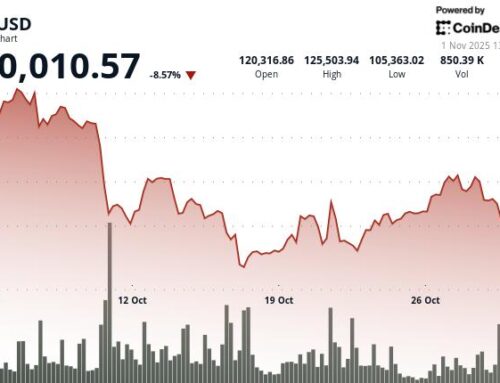Renewable Energy Still Comes at the Cost of Forced Labor. It Needs to
October 31, 2025
Despite dominating global production, China has a polysilicon problem. Having subsidized and encouraged production of this critical ingredient in solar cells and panels, the country now faces massive oversupply. The result: ferocious domestic competition and pressure from top levels of the government to resolve the problem.
In response, in late August, leading Chinese polysilicon producers indicated their intention to set up a U.S.$7 billion fund to manage the sector’s overcapacity woes—an approach that presumably has the support of the powerful Communist Party Politburo and the National Development and Reform Commission (NDRC). This new polysilicon cartel aims to buy up excess production and ease less competitive firms out of operation.
Solar power is critical for reducing emissions and mitigating the climate crisis. But it’s important to understand the darker side of the industry in China: widespread human rights violations, including forced labor. The transition to renewable energy is essential, but the urgency of the climate crisis is not an excuse to ignore forced labor and gross human rights abuses.
About 25 percent of the solar-grade polysilicon and 53 percent of metallurgical-grade silicon (which some manufacturers are starting to use in batteries for various products, including electric vehicles) used worldwide come from what China’s authorities formally call the Xinjiang Uyghur Autonomous Region (XUAR), referred to by some Uyghurs as simply “the Uyghur region” or as East Turkistan. The once-majority Uyghur population of the region, who are of Turkic descent, speak their own language, and are predominantly Muslim, have been the target of intense repression by the Chinese government. Since 2017, central and regional authorities have arbitrarily detained over a million people, subjecting them to political indoctrination,torture, family separations, and cultural and religious persecution.
Across the region, authorities also impose forced labor in industries ranging from cotton to tomatoes to polysilicon.
The most recent authoritative report on the polysilicon industry, published by Sheffield Hallam University in November 2023, concluded that Chinese authorities deliberately located production in Xinjiang because of proximity to cheap coal, lack of enforced environmental regulations, and the difficulty of scrutinizing supply chains. Growing international concern about forced labor in the early stages of polysilicon production processes have prompted restrictions such as the United States’ 2021 Uyghur Forced Labor Prevention Act (UFLPA). However, there is evidence that polysilicon producers across the XUAR have continued to use state-imposed forced labor. In fact, research published in February 2024, based on Chinese government documents and state media reports, shows that authorities intend to at least maintain and possibly increase the number of people placed in coercive work assignments, including in the solar sector.
If Chinese polysilicon producers have $7 billion to spend on “rectifying” the industry, they can afford to, and should, end forced labor in the sector, pay a living wage to workers, and pay damages to those forced to manufacture the product.
Moreover, polysilicon producers should also be able to commit to making their supply chains fully traceable and transparent. Companies that source solar panels from China should insist on this by demanding that independent international human rights investigators be given unfettered access to the region to ensure that they are not sourcing renewables produced by forced labor.
Foreign governments should also adopt and implement rules that prohibit the import of polysilicon products, and any other products from any other industry or country, made with forced labor. The Chinese government, which already has domestic laws against forced labor that it has ignored in Xinjiang, signed on to two International Labour Organization Conventions banning forced labor in August 2022 as part of an effort to deflect intense international scrutiny. Governments should watch carefully to see whether and to what extent Chinese authorities comply with requirements to report on forced labor to the International Labour Organization in 2026, the first time they are set to do so under these conventions.
Governments should also take steps to develop their own rights-respecting renewable energy supply chains. For example, the European Union’s Forced Labour Ban and its Critical Raw Materials Act, which set out benchmarks to diversify photovoltaic supply chains to ensure rights- and environment-protecting production, could be models for other high-consuming economies. Adopting requirements to repurpose and reuse solar panels at the end of their lives would also mitigate endless cycles of extraction.
Journalists and civil society groups covering China’s solar industry should consistently include information about the sector’s reliance on pervasive human rights violations. Consumers can exercise their power by buying solar products only from rights-respecting companies. United Nations High Commissioner for Human Rights Volker Turk should update the UN Human Rights Council on his office’s August 2022 report, which expressed concern about forced labor and found that the Chinese government’s policies in the Uyghur region may constitute crimes against humanity.
Those of us in the climate and rights community know that climate deniers and hardline critics of Beijing will try to instrumentalize the concerns raised here, while some working to address the climate crisis will not speak out about these abuses for fear that anything critical of the energy transition could stop it from occurring.
Beijing has poured significant resources into creating the world’s biggest renewable energy sector, but that must not come at the cost of the rights of Uyghurs—or anyone else. Those with power—in governments or C suites, and at top UN echelons—all have a role to play in ending the nightmare of forced labor in China and promoting a fast, fair, and just energy transition.
Search
RECENT PRESS RELEASES
Related Post



